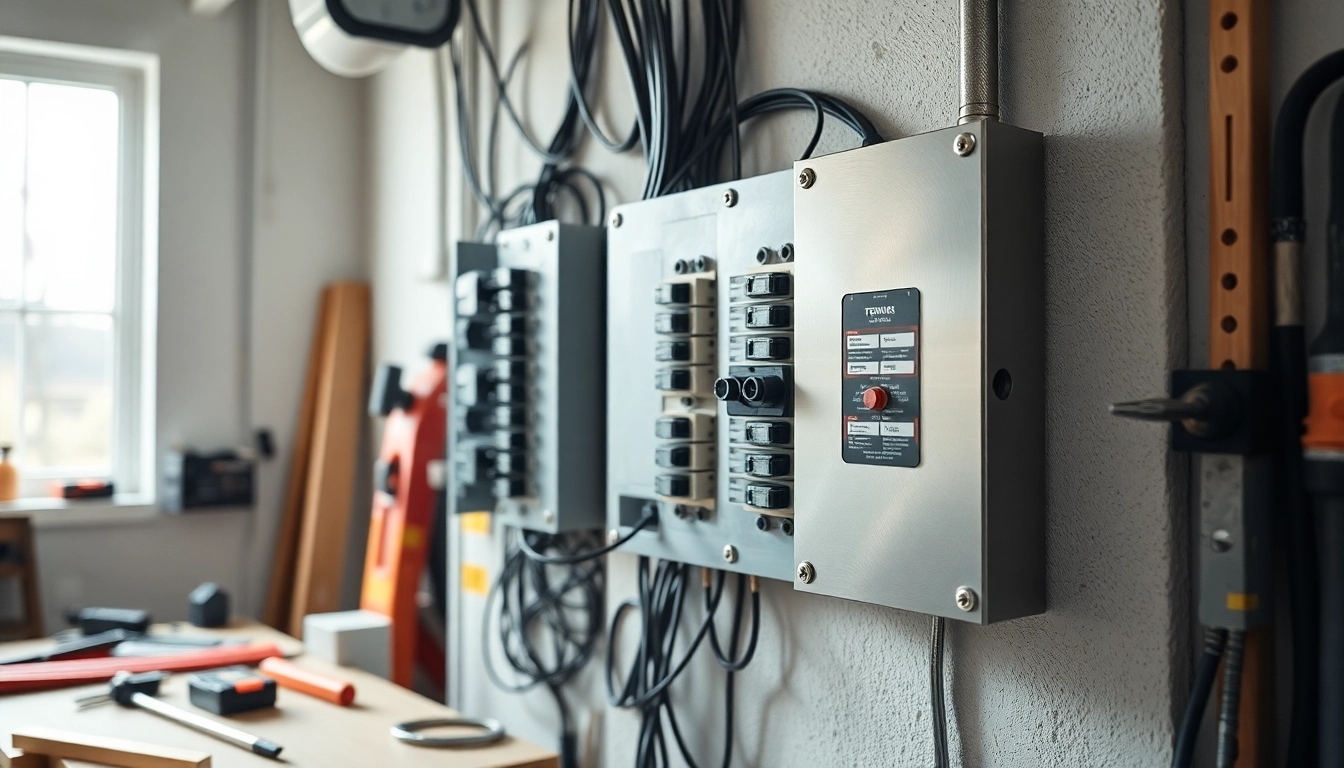Understanding the Electrical Panel: What Is It and Why It Matters
An electrical panel, often referred to as a breaker box or fuse box, is a critical component of your home’s electrical system. It acts as the hub for electricity distribution, ensuring that power flows safely and efficiently to all circuits in your home. Understanding the importance of your Electrical Panel can help you maintain your electrical system and recognize when it’s time for an upgrade or repair. This guide aims to provide you with comprehensive insights into electrical panels, including their components, functioning mechanisms, and the signs indicating that an upgrade may be necessary.
The Basics of Electrical Panels
At its core, an electrical panel is responsible for receiving electrical power from the utility company and distributing it throughout your home. It consists of various components working in conjunction to protect your electrical system and provide power to your devices and appliances. Depending on the design, the panel may either contain breakers or fuses that act as safety mechanisms to prevent electrical overloads. Understanding how your electrical panel functions can empower you as a homeowner and enable you to take informed decisions regarding maintenance and upgrades.
Key Components of an Electrical Panel
- Main Circuit Breaker: The main circuit breaker controls the electricity coming into your home. It can be switched off to disconnect power for repairs or emergencies.
- Circuit Breakers: These devices safeguard individual circuits within your home. If a circuit becomes overloaded, the corresponding breaker trips, cutting off power.
- Bus Bars: These metal bars distribute electricity from the main breaker to the various circuit breakers within the panel.
- Ground and Neutral Bars: These components provide return pathways for electrical currents and help safely carry excess currents away from sensitive equipment.
How Electrical Panels Work in Your Home
The operation of your electrical panel may seem complex, but it can be simplified into several key functions:
- The main service line brings electricity into your home and feeds it into the electrical panel.
- The main circuit breaker controls the overall electricity flow into your home. If it detects a dangerous overload, it will trip, cutting off power to prevent potential hazards.
- From the main breaker, electricity travels to the bus bars, distributing the power to your different circuit breakers.
- Each circuit breaker controls the power to specific areas or functions of your home, turning it off when overloaded to prevent damage.
Signs That Indicate It’s Time to Upgrade Your Electrical Panel
As your home’s electrical needs grow, your existing electrical panel may struggle to keep up. Here are some signs that it might be time to consider an upgrade:
Age of the Panel: When Is It Too Old?
Electrical panels have a lifespan of about 20-30 years. If your panel is approaching or has exceeded this age, it may lack the capacity to support modern electrical demands. Obsolete panels often rely on outdated technology that could pose safety risks.
Frequent Circuit Breaker Tripping
If you frequently experience circuit breakers tripping, it may indicate that your panel is overloaded. Regularly tripping breakers can be an indication of a fundamental issue within your electrical system or the panel itself. Ignoring this issue can lead to further complications, including potential fire hazards.
Inability to Handle Modern Electrical Loads
Today’s households typically utilize a greater variety of electronic devices than in the past. If your electrical panel was designed for older technology, it may not be able to support the increasing load from appliances, electronics, and HVAC systems. An upgrade may be necessary to ensure your household’s safety and functionality.
Common Types of Electrical Panels and Their Advantages
Understanding the different types of electrical panels can help you make an informed choice based on your needs.
Main Breaker Panels: Overview and Benefits
Main breaker panels serve as the primary hub for distributing electricity throughout your home. They come equipped with various circuit breakers that protect individual circuits. One of the key benefits of main breaker panels is that they allow total disconnection of power during maintenance, enhancing safety.
Sub-Panels: When Are They Necessary?
Sub-panels are secondary electrical panels that distribute power to specific parts of your home or particular appliances. They are beneficial in larger homes where the main panel might be overloaded. Sub-panels enhance flexibility, enabling you to manage electrical loads more efficiently.
Smart Panels: The Future of Electrical Management
Smart panels represent the latest advancements in electrical panel technology. They offer integrated solutions that allow homeowners to monitor their electrical usage in real time. Smart panels can help you identify areas to save energy, making them valuable both for enhancing efficiency and reducing energy costs.
The Electrical Panel Upgrade Process: What to Expect
Understanding the steps involved in upgrading your electrical panel can help prepare you for a smooth transition. Here’s a breakdown of what you can expect during the process:
Consultation with an Electrician: Initial Steps
The first step in upgrading your electrical panel should always involve consultation with a qualified electrician. They will assess your current setup and help determine the appropriate solution based on your electrical needs. They can also provide insights on local building codes and regulations that may apply to your upgrade.
Cost Breakdown: What to Budget For
Costs for upgrading an electrical panel can vary significantly based on several factors, including the type of panel, the complexity of the installation, and local labor costs. On average, homeowners can expect to pay anywhere from $1,500 to $3,000, though this figure can fluctuate. It’s crucial to budget for not just the panel itself but also installation and any necessary electrical or structural upgrades to accommodate the new panel.
Timeline: How Long Will the Upgrade Take?
The timeline for upgrading an electrical panel typically ranges from a few hours to a full day, depending on the complexity of the installation. It’s important to work closely with your electrician to understand the timeline and prepare for any necessary downtime. This will allow you to plan your day accordingly and minimize disruptions to your household.
Maintaining Your Electrical Panel After the Upgrade
Once you’ve upgraded your electrical panel, ongoing maintenance is essential to ensure its longevity and functionality:
Regular Inspections: Importance and Frequency
Regular inspections of your electrical panel should be part of your home maintenance routine. Depending on usage, it’s advisable to have your panel checked by a qualified electrician at least once every five years. This proactive approach can help catch potential issues before they escalate, ensuring your electrical system remains safe and efficient.
Signs of Wear and Tear to Watch For
After upgrading your panel, keep an eye out for signs of wear, such as rust, burn marks, or unusual noises like buzzing or humming from the panel. If you notice any of these warning signs, contact a professional electrician immediately to evaluate the situation and prevent further damage.
Improving Energy Efficiency Post-Upgrade
After an upgrade, consider implementing energy-efficient practices within your home. Using energy-efficient appliances, LED lighting, and smart home technology can reduce your overall energy consumption, lower utility bills, and extend the life of your new electrical panel. Regularly monitoring your energy usage will also help you identify areas where further efficiency improvements can be made.
In conclusion, understanding the critical role of electrical panels, recognizing signs that indicate the need for an upgrade, and maintaining the system after an upgrade can enhance the safety and efficiency of your home’s electrical system. By staying informed and proactive, you ensure a safe living environment and optimal functioning of electrical devices, safeguarding your investment for the future.



